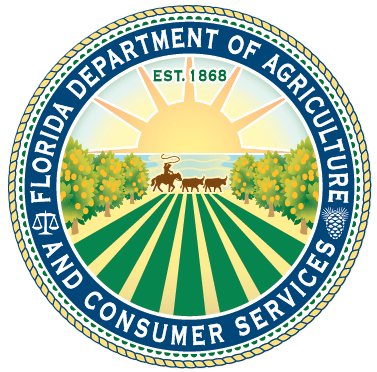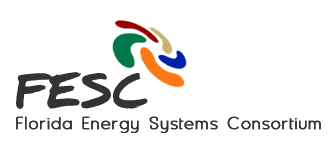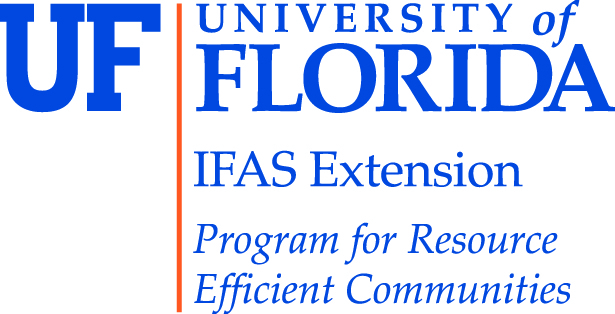Credit: Portions of this resource are excerpted and adapted from Miller, C., Sullivan, J., and Ahrentzen, S. (2012). Energy Efficient Building Construction in Florida. ISBN 978-0-9852487-0-3. University of Florida, Gainesville, FL. 7TH Edition.
Introduction
When it comes to designing, constructing, and living in more energy efficient buildings, we often pay most of our attention to the best practices in the technologies and systems installed. Yet financing is another critical part of the energy efficiency equation.
Properly designed financial products can help a builder market value-added energy related features and help a homeowner overcome the first cost barriers common during decision-making for the new construction or renovation process. Additionally, calculating the return on investment (ROI) you may realize from these building improvements can further assist marketing and risk assessment while providing a sense of confidence in the decision to invest time and money into energy efficiency.
Be SMART!
Financing energy efficiency improvements in your existing home or in the purchasing of a new or used home can be a challenging experience. Rising to meet the challenge takes a SMART approach to setting goals for your desired lifestyle change and the steps necessary to get there:
- Be Specific
- Be Measurable
- Be Adaptable
- Be Realistic
- Be Timely
Step 1: Create a Financial Action Plan
The first step in a SMART approach to financing your improvements is to make a plan. The key actions in your plan should include the following:
- Determine what’s important to you and your household
- Undertake some family financial forecasting
- Conduct a cash flow analysis of comparing income and spending along good guidelines from American averages or your own household history
- Properly plan your spending and saving activities with a thorough household budget to allow for the new burden of your anticipated home improvement loan
- Review your plan at least monthly to track your goals, objectives, and outcomes with an adaptive attitude accounting for action adjustments where necessary
For more complete coverage of the critical considerations in creating a financial action plan, we encourage you to read the following fact sheets from the University of Florida IFAS Cooperative Extension Service. More personal guidance may be available at your local UF/IFAS Extension office.
- UF/IFAS – Your Financial Action Plan (EDIS-FCS5204)
- UF/IFAS – YOU and YOUR CREDIT: A Seven Part Series for Florida Borrowers (EDIS-FCS7236)
Step 2: Evaluate Your Energy Efficiency Improvement Opportunities
There are nearly limitless online resources available to help you and your household to learn about home energy efficiency as you evaluate your opportunities and create a plan. If you haven’t already done so, we encourage you to take our Interactive Tour or to click through our Energy Education Library. Additional general helpful resources can be found at the following web sites:
- CEE – Directory of Energy Efficient HVAC Equipment
- NAHB Research Center – Toolbase Resources
- US/DOE – Energy Saver Web Portal
- US/DOE – Energy Saver Guidebook
- US/EPA – ENERGY STAR®
- US/SBA – Energy Saving Calculators from ENERGY STAR®
Step 3: Search for Incentives to Reduce Your Costs
Look no further than our Incentives page for more information!
Step 4: Find Financing to Fund Your Energy Efficiency Improvement Project
Most financial institutions offer some type of mortgage and/or home improvement loan product. As it would be impossible to cover all of the institutions and their offerings here, we encourage you to reach out to your preferred bank or credit union local branch office. There are also many online institutions which may provide suitable services as well as interactive financial calculators to assist in your decision making. A simple inquiry to your favorite online search engine is a great place to start.
Like most consumer decisions, its always a good idea to shop around for multiple options evaluating not only the financial aspects, but also the customer service reputation. The following list provides a few questions to keep in mind when shopping for a personal loan:
- What household records and supporting documentation is necessary?
- What is the estimated time required for the loan application and approval process?
- Is the loan a property secured (i.e., will it require some degree of equity in your home) or an unsecured (i.e., no collateral like home equity is required) product?
- What are the key characteristics of the loan product being offered (e.g., size, tenure/duration, terms, fees, etc.)?
- Are there any pre-payment penalty fees?
- Are there any conditions which may allow the lender to require full payment of the loan before the agreed pay off date? Why?
- What are the monthly payments and total interest associated with the loan?
Energy Efficient Mortgages
Since 1995, the U.S. Department of Housing and Urban Development has made Energy Efficient Mortgages (EEMs) available nationwide. These loan products allow the total loan amount to increase in relation to the projected monthly utility bill savings from applicable energy improvements, capped by the lesser of the following three criteria:
- 5% of the value of the property, or
- 115% of the median area price of a single family dwelling, or
- 150% of the conforming Freddie Mac limit.
It is important to note that some details may vary by lender and we encourage all borrowers to get multiple rate quotes and ask the lenders to compete for their business. Progressive builders should network with EEM approved lenders and inquire about options that may be available to assist builders in offering their clients on-site loan approvals at the time of quoting a construction project. Often, simplicity and streamlining of the loan underwriting and origination process can be more important than loan rates or tenures. For more information about EEMs and to review approved lenders in your area, see the following links:
- HUD – FHA Energy Efficient Mortgage: Program Overview
- HUD – FHA Energy Efficient Mortgage: Home Owner Guide
- FSEC – Financing Energy Efficiency: An EEM Handbook
- List of Approved HUD – FHA EEM Lenders
- US/DOE EERE: Energy Efficient Mortgages
Additionally, if you are not aware of the home energy rating system (HERS), we encourage you to visit the following links to learn more, including how it might be utilized in the EEM process, and how you can find certified professionals to serve your needs.
- FESC – Home Energy Ratings (Overview)
- FESC – List of Certified Building Energy Raters
- Residential Energy Services Network (RESNET)
- US/DOE EERE – Home Energy Score
The SAVE Act
Building on the long history of EEMs, the Sensible Accounting to Value Energy (SAVE) Act strives to further refine the methods used to internalize energy efficiency into the lending process. More information on this proposed legislation can be found at the following site hosted by the Institute for Market Transformation.
Appraising Energy Efficiency and Renewable Energy within Buildings
Though EEMs have been available for about two decades, it is only in recent years that energy focused green building features have truly begun diffusing into the marketplace. One example is the growing awareness and standardization within the property appraisal and real estate brokerage industries. The following resources provide a glimpse of how appraisers are valuing and how Realtors® are listing green features.
- Appraisal Institute: Analyze the Value of Going Green with Appraisal Institute Resources
- Appraisal Institute: More Green Resources and Forms
- AI Reports Releases New Form 820.04: Residential Green and Energy Efficient Addendum
- National Association of Realtors® – Greening the Multiple Listing Service (MLS)
Of special interest may be the significant resale premiums being seen in homes with solar photovoltaic (PV) modules. One recent study in California found an average of approximately $5,500 per kW in sales premium for residential building integrated solar PV. Additional resources are included below.
- Appraisal Institute: Solar Electric Systems Positively Impact Home Values
- Hoen, Ben, Ryan H. Wiser, Peter Cappers, and Mark A. Thayer. “An Analysis of the Effects of Residential Photovoltaic Energy Systems on Home Sales Prices in California.” Berkeley, CA: Lawrence Berkeley National Laboratory, April 2011.
- Hoen, Ben, Geoffrey T. Klise, Joshua Graff-Zivin, Mark A. Thayer, Joachim Seel, and Ryan H. Wiser. “Exploring California PV Home Premiums.” Environmental Energy Technologies Division. Lawrence Berkeley National Laboratory, December 2013.
- Sandia Tool Estimates Value of PV Systems
- Solar Valuation: An Appraiser’s Guide to Solar
Additional Guidance on Financing Energy Efficiency
To get ballpark estimates of the monthly burden a particular loan may place on your household financial budget, you may review typical financing rates and monthly payment obligations on our tables page. Finally, additional opportunities and educational pointers may be available through the following guiding documents:
- US/DOE EERE – Solution Center: Financing Solutions
- US/DOE Energy Savers – Financing Energy-Efficient Homes
- US/SBA – Financing Energy Efficiency Projects (Note: Most Relevant for Commercial Building Improvements)
References and Resources
Miller, C., Sullivan, J., and Ahrentzen, S. (2012). Energy Efficient Building Construction in Florida. ISBN 978-0-9852487-0-3. University of Florida, Gainesville, FL. 7th Edition.
Turner, J. and Gutter, M. (2013). Your Financial Action Plan (EDIS-FCS5204). University of Florida, Institute of Food and Agricultural Sciences. Retrieved June 6, 2015.
Acknowledgements
Authors: Hal S. Knowles, IIIa, Craig Millera, James G. Sullivanb, and Sherry Ahrentzenb
a Program for Resource Efficient Communities, Florida Cooperative Extension Service, Institute of Food and Agricultural Sciences, University of Florida, Gainesville, FL
b M.E. Rinker, Sr. School of Construction Management, College of Design, Construction, and Planning, University of Florida, Gainesville, FL
First published June 2013. Revised June 2015.
This is a fact sheet produced for the Florida Energy Systems Consortium (FESC). The goal of the consortium is to become a world leader in energy research, education, technology, and energy systems analysis.




